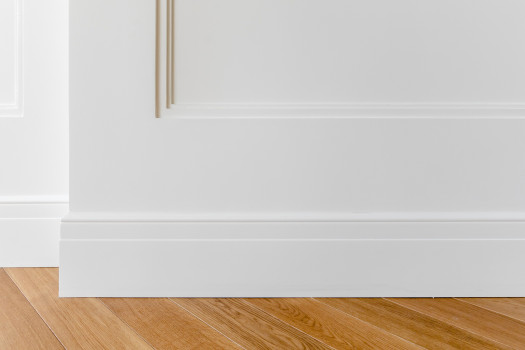Architectural Product Specification: Understanding Digital Transformation




What is Architectural Product Specification
Architectural product specification is the detailed process of selecting and describing materials, finishes, and components for a construction project. This crucial phase ensures the seamless execution of architectural designs, meeting aesthetic and functional requirements.
Importance of Keeping Up with Trends in Architecture
Staying abreast of architectural trends is vital for professionals in the industry. It not only enhances the aesthetic appeal of projects but also integrates cutting-edge technologies and sustainable practices, ensuring designs are both modern and forward-thinking.
This article explores the transformative trends in architectural product specification, delving into digital transformation, sustainability, technological integration, customisation, advanced materials, and collaboration tools.
Digital Transformation in Product Specification
Use of BIM (Building Information Modeling)
1. Enhanced Collaboration: The adoption of BIM facilitates seamless collaboration among architects, engineers, and contractors, ensuring a cohesive and efficient project development process.
2. Streamlined Project Management: BIM streamlines project management by providing a centralised platform for information, reducing errors, and improving overall project efficiency.
Augmented Reality (AR) and Virtual Reality (VR) in Product Visualisation
1. Improved Design Visualisation: AR and VR technologies offer immersive experiences, enabling architects to visualise and assess products in real-world scenarios, enhancing design precision.
2. Client Engagement and Decision-Making: Clients can actively engage in the design process through AR and VR, making informed decisions and fostering a deeper understanding of the outcome.
Streamlining Architectural Product Specification
Utilising a platform that gathers product information, specifications, and documentation in a single accessible location is one of the trends. This minimises the requirement to search through various sources, thereby saving time and effort. This is where Archify comes in, It is a platform designed to empower professionals in the building and construction industry by providing endless design inspiration. It simplifies the process of researching, comparing, and sharing designs, as well as specifying high-quality products for various projects. The platform connects users directly with superior suppliers, making product specifications easier. With user-friendly tools and handpicked resources, Archify enables users to explore ideas, filter products, and compare them easily. The platform also keeps users informed about industry trends through newsletters. Archify also has specification management software, which enables architects to swiftly and effectively write, edit, and coordinate project specifications and product schedules.
Sustainable and Eco-Friendly Specifications
Demand for Green and Sustainable Materials
1. Low Carbon Footprint Materials: The industry is witnessing a surge in demand for materials with low environmental impact, contributing to sustainable and eco-friendly building practices.
2. Energy-Efficient Products: Architects are increasingly specifying energy-efficient products to create environmentally conscious and energy-efficient structures.
Cradle to Cradle Design Principles
1. Recycling and Reusability: The Cradle to Cradle approach focuses on materials that can be recycled or reused, promoting a circular economy and reducing waste.
2. Environmental Impact Assessment: Architects are incorporating environmental impact assessments into their specifications, considering the lifecycle of materials and their overall ecological footprint.
Smart and Technologically Integrated Products
The integration of the Internet of Things (IoT) into architectural products transforms physical objects into intelligent ones. By connecting sensor-based devices to a shared infrastructure like an Extranet, the Internet, or a network, direct human-to-computer interaction for data exchange becomes unnecessary. This enables remote control via commands from computers or smartphones, revolutionising daily tasks and enhancing convenience in our lives. Here are two key applications:
1. Smart Lighting and HVAC Systems: Implementing IoT in architectural specifications enables the incorporation of smart lighting and HVAC systems, which improve energy efficiency and enhance occupant comfort.
2. Building Automation for Efficiency: IoT-enabled building automation systems optimise operations by facilitating real-time monitoring and control of various architectural elements, leading to increased efficiency.
Integration of Sensors and Responsive Architectural Products
The integration of sensors into responsive architectural products heralds a new era of creativity and functionality. By embedding sensors within architectural elements, structures acquire a heightened awareness of their surroundings, enabling them to adapt and respond dynamically. This advancement represents a significant leap in architectural technology, delivering solutions that seamlessly combine sustainability, efficiency, and user-centric design principles. Here are two key applications:
1. Adaptive Building Materials: Architects are opting for materials equipped with sensors, enabling the creation of adaptive structures that adjust to environmental conditions, thereby enhancing sustainability and efficiency.
2. Sensor-Embedded Surfaces: Surfaces embedded with sensors contribute to the development of intelligent environments, offering dynamic responses to user interactions and fluctuations in environmental conditions.
Tailored Solutions in Architectural Product Design
1. Customisable Finishes and Features: The trend towards customisation extends to architectural finishes and features, allowing for tailored solutions that meet the unique needs and preferences of clients.
2. Personalised User Experiences: Architectural product specifications now consider the end user's experience, focusing on creating spaces that align with individual preferences and functional requirements.
Advanced Materials and Fabrication Techniques
Innovations in Building Materials
1. High-Performance Composites: Architects are specifying high-performance composite materials that offer enhanced durability, strength, and versatility in construction projects.
2. 3D-Printed Architectural Elements: The adoption of 3D printing in architectural product specifications enables the creation of intricate and customised elements, revolutionising the construction industry.
Prefabrication and Modular Construction
1. Speed and Efficiency in Project Delivery: Prefabrication and modular construction techniques are gaining popularity for their ability to accelerate project timelines while maintaining high-quality standards.
2. Reduction of Construction Waste: These techniques minimise construction waste, contributing to sustainable building practices and aligning with environmental conservation efforts.
Collaboration and Communication Tools
Cloud-Based Specification Platforms
1. Enhanced Accessibility and Collaboration: Cloud-based platforms facilitate accessibility to project information from anywhere, promoting collaboration among team members and stakeholders.
2. Real-time Updates and Version Control: These platforms offer real-time updates and version control, ensuring that all project stakeholders are working with the latest information.
Online Communities and Forums for Specification Professionals
1. Knowledge Sharing and Networking: Online communities and forums provide a space for specification professionals to share insights, best practices, and industry knowledge.
2. Industry Insights and Best Practices: Active participation in these platforms allows professionals to stay informed about industry trends, innovations, and evolving best practices.
Anticipated Developments in Architectural Product Specification
1. Emerging Technologies: Continued advancements in technology, such as AI and machine learning, are expected to influence architectural product specifications, opening new possibilities.
2. Shifting Industry Dynamics: The industry is likely to experience dynamic shifts, driven by evolving consumer preferences, environmental considerations, and technological breakthroughs.
In today's architectural scene, various significant trends are reshaping the industry. Ranging from digital transformation and sustainability to technological integration, customisation, advanced materials, and collaboration tools, architects are experiencing a fundamental shift. These trends not only impact building design and construction but also influence how architectural practices function.
To stay competitive and meet the changing needs of clients, architectural firms must adapt to these trends. Incorporating digital tools, sustainable practices, technological integration, and embracing customisation are vital steps in remaining at the forefront of the industry.
Continuous learning is essential for architects and specifiers to stay updated with emerging trends. By staying informed and utilising innovative tools, professionals can enhance their skills in the architectural product specification. Embracing these shifts isn't just crucial for survival; it also opens up exciting opportunities for growth and innovation in the architectural realm.




 Indonesia
Indonesia
 New Zealand
New Zealand
 Philippines
Philippines
 Hongkong
Hongkong
 Singapore
Singapore
 Malaysia
Malaysia







